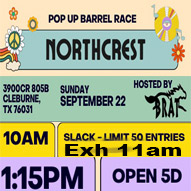Schaumburg, IL — A recent decision by the U.S. Department of Agriculture (USDA) to scrap a national animal identification system could seriously hinder U.S. veterinarians’ ability to track diseased animals and prevent the spread of those diseases —diseases that could spread to humans and cost U.S. farmers millions of dollars.
That’s the message that Dr. Ron DeHaven, chief executive officer of the American Veterinary Medical Association (AVMA) and a former head of the USDA Animal and Plant Health Inspection Service, delivers in a new video which can be viewed on www.avmatv.org, the AVMA Media Library (www.avma.org) and YouTube. “I have a number of concerns,” Dr. DeHaven says in the video.
Last month, the USDA announced that it was going to scrap the eight years of work and $120 million it poured into creation of the National Animal Identification System (NAIS). Instead, the USDA announced it will restart the process and begin developing a new state-based animal identification system.
“By having an animal ID program in place, we can more quickly contain and eliminate disease. Doing so not only minimizes the economic impact, but by minimizing the number of animals affected, we reduce animal suffering,” Dr. DeHaven says in the video. “In the case of zoonotic diseases – diseases that can spread from animals to humans – we reduce the potential that the disease will spread to humans.”
Dr. DeHaven says that one of the biggest problems with this announcement is that there will be no animal ID system during this new development period, which could take years. DeHaven is also critical of the USDA announcement that cattle branding—an outdated form of theft deterrent—will be an acceptable form of animal identification in the new system. “It’s hard for me to imagine how this ancient technology will fit into a modern, interstate system to trace animals,” DeHaven says in the video.
As opposed to NAIS, which is a national program, the new system will be administered by individual states and tribal nations. Each state and tribal nation will be allowed to use its own system of identification.
“Will these systems developed by individual states and tribal nations be compatible with each other?” Dr. DeHaven asks in the video. “Will we actually be able to trace animals as they move from state to state with different systems in each state or tribal nation?”
The full video can be viewed at the AVMA’s video site, AVMA-TV, at www.avmatv.org, and a downloadable version of the video is available to journalists through the association’s media library, www.avmamedia.org. As with all its Web videos, the AVMA encourages bloggers and journalists to freely post and quote from this video. AVMA-TV offers a full library of videos about veterinary medicine—from veterinary careers to food safety and brushing your pet’s teeth—open for use by the public.
For any other information about veterinary medicine, please visit www.avma.org.
###
The AVMA, founded in 1863, is one of the oldest and largest veterinary medical organizations in the world. More than 80,000 member veterinarians are engaged in a wide variety of professional activities. AVMA members are dedicated to advancing the science and art of veterinary medicine including its relationship to public health and agriculture. Visit the AVMA Web site at www.avma.org to learn more about veterinary medicine and animal care and to access up-to-date information on the association’s issues, policies and activities.





